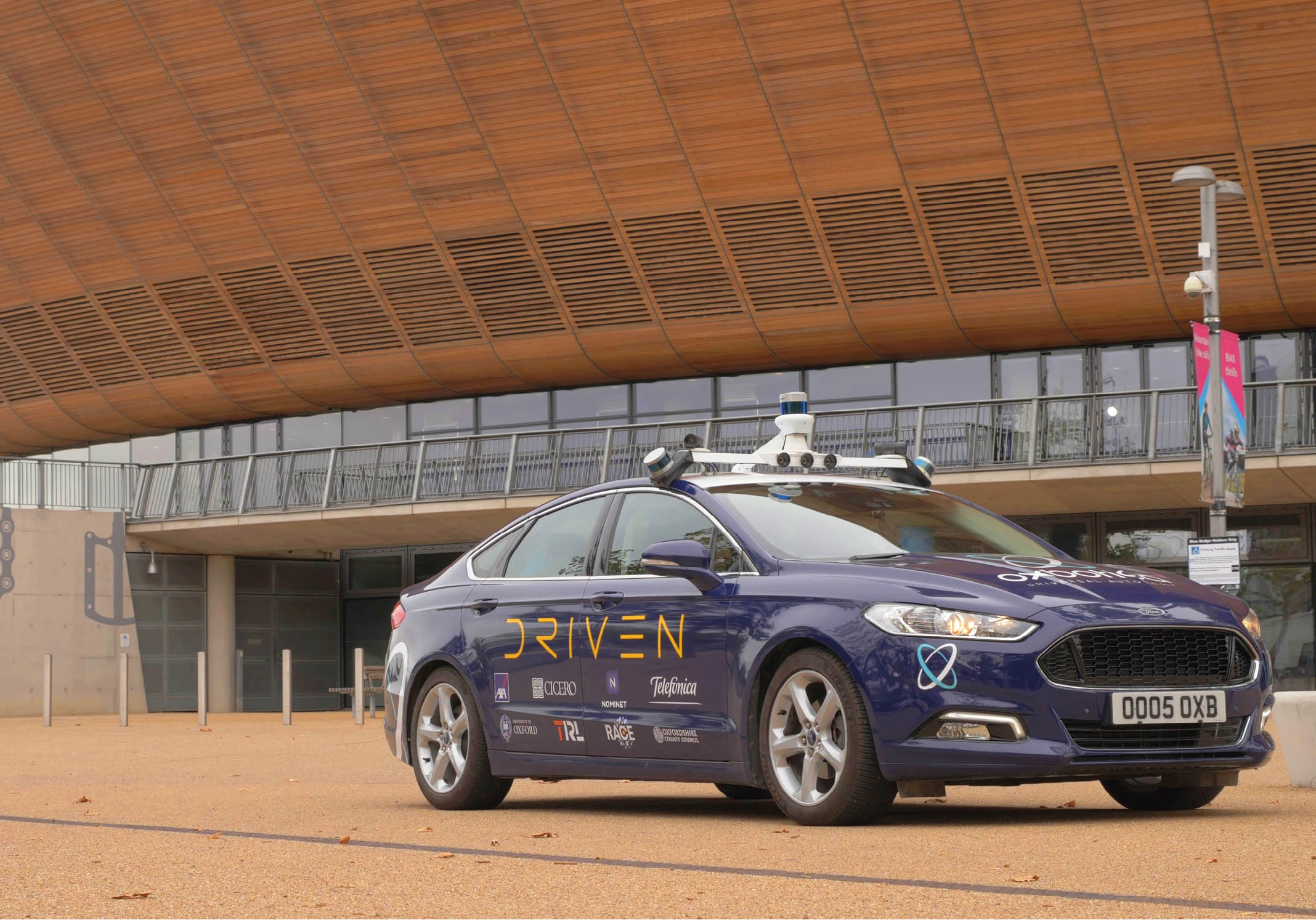Following successful trials in Oxford, the vehicles began by mapping the streets of Hounslow, selected for being an outer London Borough and because of its role as a key link between Oxford and London.
The data gathered during this phase provided vital information to support the consortium’s plans to run a fleet of autonomous vehicles between Oxford and London in 2019.
For the mapping process, Oxbotica gathered data to help understand the contents of street signs, and the meanings of lane markings on the road to enable vehicles to be as knowledgeable as a local resident about the complexities of each street. This process was repeated many times, and at different times, improving the understanding of how the vehicle experienced the streets in different lighting conditions, weather and seasons of the year.
To conduct the mapping, the vehicles were fitted with a wide variety of technology including Oxbotica’s Selenium autonomy software, radar, lidar sensors, on board computers, and cameras.
This marked a major project milestone for the DRIVEN consortium, an Innovate UK-backed research project formed of the Oxford Robotics Institute, AXA XL, Nominet, Telefonica, TRL, the UK Atomic Energy Authority’s robotics centre RACE, Oxfordshire County Council (OCC), Westbourne Communications and Transport for London (TfL).
Benefiting from an £8.6 million grant awarded by Innovate UK, it was an ambitious project that looked beyond what makes one car autonomous, instead exploring what more could be done with an entire fleet.
The plan for the project is depicted in this infographic, and the role of the supply chain in delivering the project is explained in this infographic.
Oxbotica engaged with OCC and TfL to select roads for trials, liaising with emergency services, and informing local stakeholders such as the London Borough of Hounslow.
Through its members at Telefonica and Nominet were responsible for ensuring maximum security of this data to protect drivers and other vehicles from cyber security threats. The trials included testing data transfer between the vehicles and consortium partners as part of the development of a robust cyber security model for this technology. This is the first time these innovations will be trialled on London roads.
When the DRIVEN vehicles were on the road, a fully qualified safety driver was behind the steering wheel at all times, sitting alongside an engineer monitoring the vehicle’s functions in the car. You can see the autonomous vehicles in operation in this demonstration video:
TRL’s technical contribution to DRIVEN
- TRL provided review and assurance of the safety case for the on-road trials, building on knowledge gain from previous autonomous vehicle trials that has contributed to the development of safety regulations for trials, and the commercial roll out of driverless vehicles in the UK.
- TRL built a situational risk analysis tool to help Oxford and the London Boroughs identify appropriate routes for the trials. The tool and resulting data also helped the consortium partners understand the risks associated with these trials.
- TRL monitored and evaluated the success of data transfers between CAVs and traffic control systems, which could potentially result in improved traffic signal and flow optimisation.
This video interview summarises TRL's contribution. (Similar videos were made by all partners in the consortium at the time.)
This video provides a brief overview of the Risk Tool created for insurers and highways network managers.
Subsequent exploitation of the trials by TRL
Risk Management: TRL has been engaging with the insurance sector to help them understand the evidence required to adapt their business and insurance pricing models when underwriting connected & automated vehicle trials, in readiness for the commercial deployment of CAVs at scale in the UK. The same models can be used by other cities planning to host trials of automated vehicle technologies and new mobility services.Safety Standards for CAV Trials: Lessons learned from the DRIVEN trials have been included in the safety framework developed and authored by TRL on behalf of the British Standards Institute (BSI). This will form the basis of new specifications for regulating the safe conduct of technology testing on public roads in the UK.
Smart Mobility Living Lab (SMLL): The safety case for DRIVEN trials around the London Borough of Stratford specifically informed the development of the safety case and data solutions for trials to be conducted by the SMLL London CAV testbed, which has a 24km urban test route around Woolwich and Queen Elizabeth Olympic Park.

